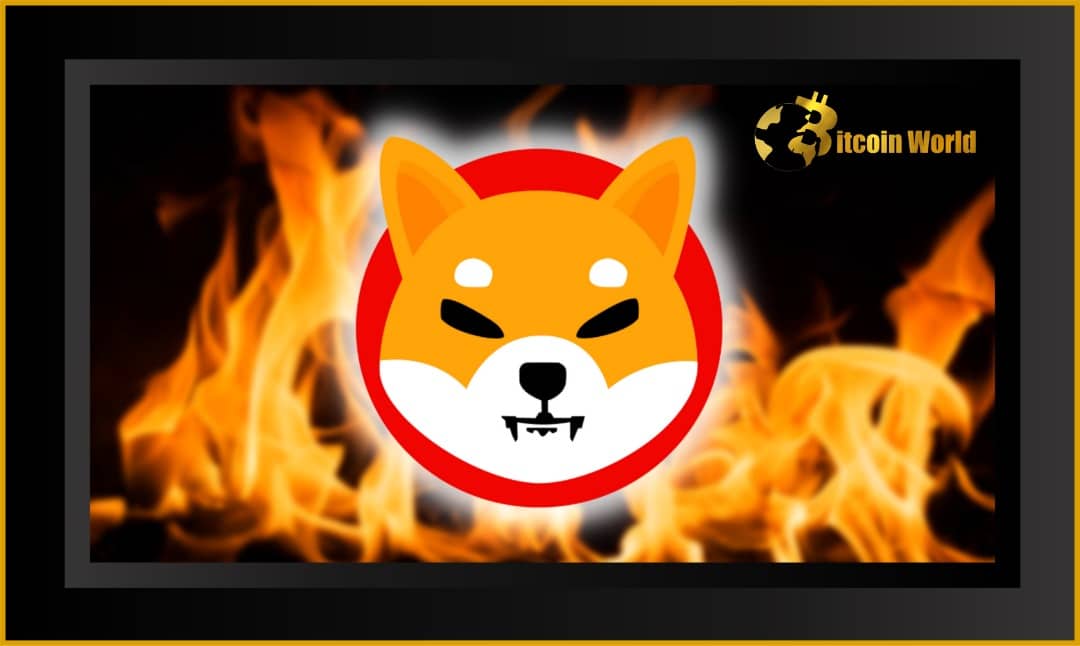Shiba Inu (SHIB), once playfully dubbed a meme coin, has been diligently carving a path toward mainstream recognition and utility. It’s no longer just about internet jokes; SHIB has secured partnerships and is increasingly accepted as a viable payment option by various service providers. This transformation is largely fueled by a conscious effort to build sustainability into the SHIB ecosystem.
The Power of Scarcity: Why Token Burning Matters for SHIB
In the world of cryptocurrencies, supply dynamics are crucial. Just like in traditional economics, an oversupply of an asset can depress its price. Why? Because the fundamental principle of scarcity, which often drives value, diminishes. This was a challenge SHIB faced, but the introduction of a token burning mechanism has been a game-changer. By strategically reducing the total supply, SHIB is aiming to regain investor attention and appreciation.
Think of it like this: Imagine a limited edition collectible. Its value often skyrockets because there are only a few available. Token burning applies a similar principle to digital assets. By permanently removing tokens from circulation, the remaining tokens potentially become more valuable over time, assuming demand stays constant or increases.
For SHIB, community and social media buzz have always been powerful assets. Now, by adding scarcity to the mix through token burns, SHIB is amplifying its appeal and potentially strengthening its position in the crypto market.
How Does SHIB Burning Work? NOWPayments and Merchant Participation
To make the burn mechanism effective and community-driven, crypto exchange services are stepping up. NOWPayments, for instance, offers a built-in burn feature for merchants who accept SHIB. This innovative feature allows businesses to automatically burn a percentage of their SHIB profits, ranging from 0% to a full 100%, with each transaction.
This is a win-win situation:
- For Merchants: They can align their business with the SHIB community’s goals and potentially attract more customers who value token burning initiatives.
- For the SHIB Community: Every merchant who opts to burn a portion of their earnings contributes to the overall reduction of SHIB supply, supporting the long-term value proposition of the token.
Since the initial, massive burn of 410 trillion SHIB (a significant portion of the initial supply gifted to Vitalik Buterin, who then burned it), the community and various initiatives have continued to chip away at the circulating supply.
Burn Rate Fluctuations: Investor Interest and Market Dynamics
Let’s delve into the numbers. Examining the SHIB burn rate over recent months reveals interesting trends tied to market sentiment and investor activity.
In August, September, and October, the highest burn was recorded, with a total of 9 billion SHIB. However, since November, the same figure has dropped to 1.1 billion due to a lack of investor interest after SHIB collapsed by 74%.
As highlighted in the heading, data shows a significant drop in the monthly burn rate. Between August and October, a robust 9 billion SHIB tokens were burned. However, post-November, this figure plummeted to just 1.1 billion. What caused this shift?
The article points to a key factor: investor interest. The drop in burn rate coincided with a significant 74% price correction in SHIB. This market downturn likely dampened investor enthusiasm, leading to reduced trading activity and, consequently, fewer burns occurring through mechanisms like merchant burns and community initiatives.
Recent Revival: Is SHIB Burning Momentum Building Again?
While SHIB experienced a price dip following the November peak, recent market activity suggests a potential resurgence of interest. Despite a pullback after a February rally, SHIB has shown resilience and is currently trading approximately 15% above its recent low.
This renewed bullish sentiment appears to be re-energizing investors, and on-chain data supports this observation. Transaction volume, a key indicator of network activity, reached a peak in November with an impressive 133,000 transactions in a single day. While transaction numbers dipped subsequently, they have been on a steady upward trend since, peaking again last week around March 16th.
This resurgence in activity has translated to a positive impact on the SHIB burn rate. This month has witnessed a five-month high, with a total of 4.4 billion SHIB tokens burned. This indicates a potential correlation: as investor activity and on-chain transactions increase, so does the SHIB burn rate.
Can On-Chain Activity Fuel a SHIB Price Surge?
The recent data suggests a promising outlook for SHIB. The increase in daily active users and transaction numbers, coupled with a rising burn rate, paints a picture of renewed community engagement and potentially growing investor confidence.
Key Takeaways:
- On-Chain Metrics Matter: Daily active addresses and transaction volumes are valuable indicators of SHIB’s network health and investor interest.
- Burn Rate as a Sentiment Gauge: The SHIB burn rate can reflect prevailing market sentiment and community activity.
- Potential Price Catalyst: Sustained increases in on-chain activity and burn rates could create a positive feedback loop, potentially contributing to upward price pressure for SHIB.
While the cryptocurrency market is inherently volatile and predictions are never guaranteed, the recent trends in SHIB’s on-chain metrics and burn rate offer reasons for cautious optimism. If these positive trends continue, and the community remains engaged in burning initiatives, Shiba Inu’s journey from meme coin to a more sustainable and potentially valuable digital asset could gain further momentum.
Related Posts – Ferrari joins the NFT universe through a collaboration with a Swiss…
Disclaimer: The information provided is not trading advice, Bitcoinworld.co.in holds no liability for any investments made based on the information provided on this page. We strongly recommend independent research and/or consultation with a qualified professional before making any investment decisions.


